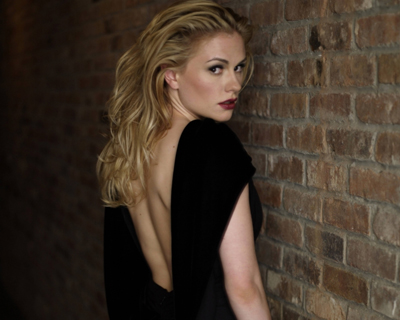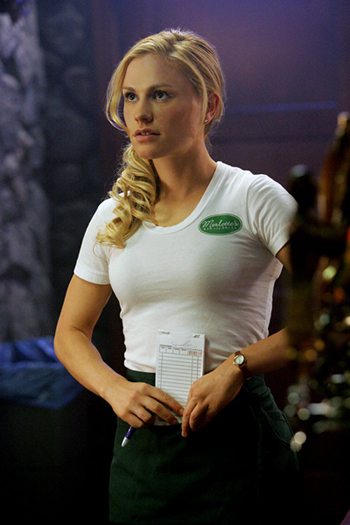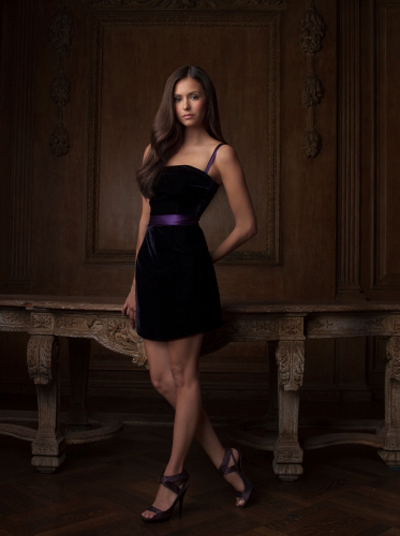





 |
The lead female roles from True Blood, Twilight, and Vampire Diaries represent the presumed sexualized components which create the vampire phenomenon. Promotional images of these women display the women in all black semi-formal attire. Likewise, all of them have their hair down and make-up on, which can be categorized as representations of femininity. Another similarity of these images is the fact that all of the women are wearing black and are positioned in a laid back stance. Research done by Mock-Turner et al, "found that women advertising characters continue to be displayed as subordinate to men, in passive roles, and as sex objects" (Mock-Turner et al). This research looked at the roles of women in advertising and found that these roles did not vary much and that "female sexual objectification was a common theme through advertisements as a whole" (Mock-Turner et al). The objectifying of women is clear in these images, because the women stand alone as the central component of the image. Most images show the male and female character together, yet these have a focus solely on the female character. As a result, these women are looked at as subordinate to men, because of their body stance under the presumed male gaze. In many ways they seem to be holding back. Although we can see their faces, at least one part of their body is turned away, or held back from the camera. |  |
 |
The images on the left are not necessarily advertisements one would see in a magazine, but instead promotional images used on websites to promote the show as a whole. From a psychoanalytical standpoint, it is clear that these images are driven by fetishistic scopophilia. Although these images do not directly advertise or promote the show, pleasure in looking at images of these women help to create the vampire phenomenon by drawing in male viewers (Rose). Rose describes the presentation of a woman in regards to fetishistic scopophilia by stating that "her beauty is so overwhelming, often pictured in huge close-ups, so perfect, that the threat of castration is assuaged as she is turned into a reassuring object in an intimate relation to the spectator" (Rose 118). In Michael Lavin's study of women in comic books, "Vampirella, an alien who must drink human blood for nourishment, looks like a super-voluptuous parody of the 1950s pinup model, Bettie Page," created solely for the male audience (Lavin). Vampirella was drawn wearing "black, high-heel boots and an outrageous red thong bathing suit" in order to draw in an intended male audience (Lavin). Just as Vampirella was created to soothe the male senses, the sexualized portrayals of female leads in vampire related television and movies are meant to draw in the male audiences. |  |
 |
Besides using these images to draw in the male audience, these images may also have other intentions. "Perhaps the smooth surface does not hide something horrible, does not conceal a castrated body. Perhaps it hides something else" (Rose 123). The images to the right, which represent scene stills, are an important transition into the understanding of fear of death and fear of the "other". These women look death in the eye and conquer all fears of the "other", because of the intimate relationships they have with vampires. In Heather Hendershot's analysis of female characters in media television, Hendershot believes there has been a shift in the understanding of empowerment for women in present day society. "Empowerment used to mean better jobs, better pay, a better division of domestic labor, and better sex. On these shows it now only means better sex, implicitly achieved by having huge knockers" (Hendershot). In contrast with this belief, these vampire characters are sexually pleasing, yet also offer empowerment in other ways as well. These women face death head on, going as far to sleep with death. When we see an image of the women in these shows in regular clothing and normal make-up, this makes the women more relatable. As a result, we begin to see their persona as something we might want to embrace. These women are able to balance female empowerment with societal standards of appearance. These women can be both sexualized and empowered, which makes the sexualized idea of the vampire phenomenon something positive and captivating for both male and female audiences. |  |